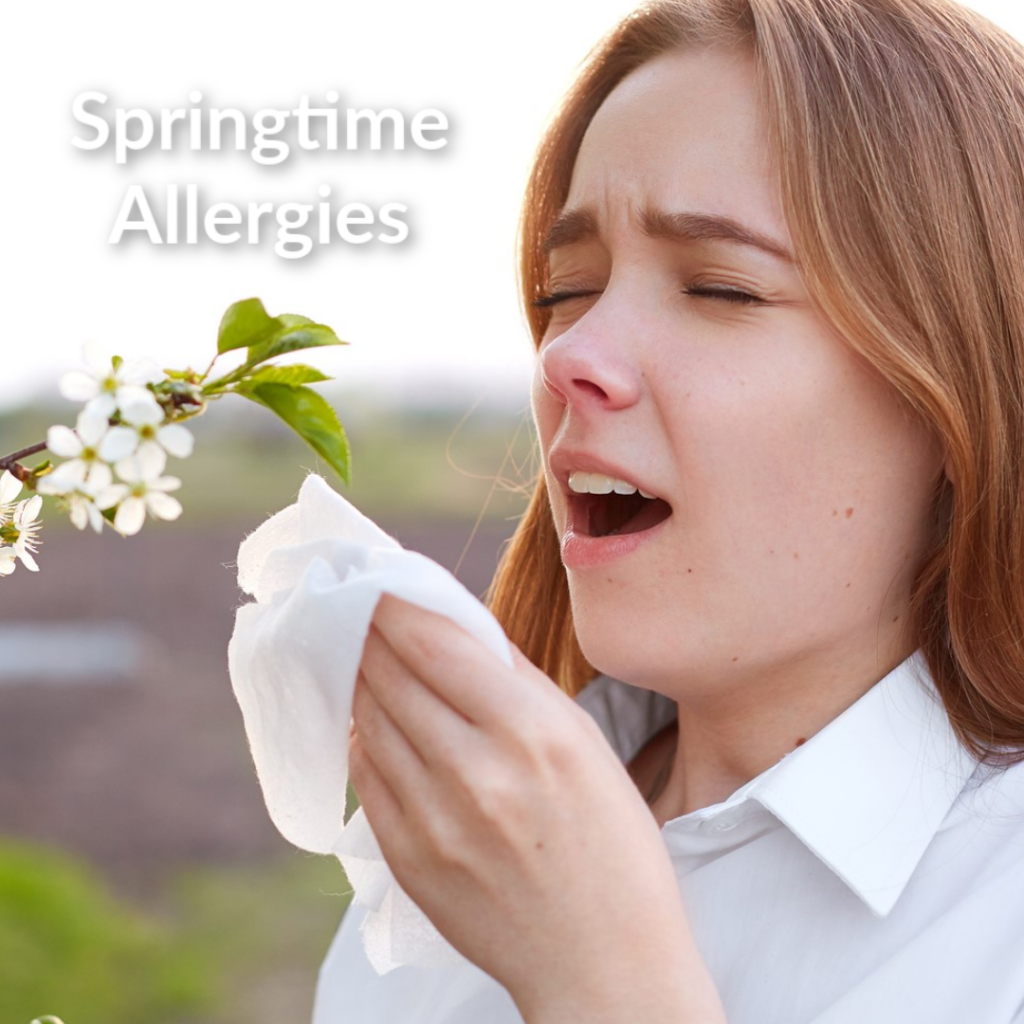
Signs, Symptoms and When to Seek Emergency Care
Most of us recognize spring as allergy season. There’s more at play than just allergies. Here is a guide to understanding springtime health conditions, how to recognize them, and when to seek the advice of your doctor or emergency medical facility.
Spring typically means a return to outdoor activities and the lengthening of days, but it can also be a time for allergy related respiratory illnesses. The reason for the spike in allergy flare-ups in spring is because trees and plants are blooming, and pollen gets carried by the wind ending up in our noses, eyes, and lungs.
Respiratory Allergy Symptoms
- Swelling and mucus production in the nose
- Redness, tearing, burning, and itchiness in the eyes
- Swelling, wheezing, and mucus production in the lungs
Pollen allergies are not life threatening, they’re just a nuisance and an interruption that never seems to stop. In addition to pollen allergies, springtime brings other health problems to be on the look-out for. Here, we explore the other side of how warmer weather affects our health. (ACAAI)
Other Springtime Illnesses
Asthma
Asthma triggers abound outdoors in the spring, and can include pollen, air temperature changes, fertilizers, and insect repellents. Indoor triggers—such as dust, mold, and cleaning chemicals—can also be problematic. Asthma is a chronic respiratory condition managed by a physician. It can be life-threatening. Those who suffer from asthma should have an emergency protocol available in case prescribed medications do not relieve the inability to breathe.
Rhinovirus
Spring is a peak time for the common cold. Rhinoviruses—which cause roughly 50% of all common colds—are spread easily. It’s important to remember to wash hands regularly and avoid touching the eyes, nose, and mouth.
Flu
Unfortunately, the flu does not stop with the warmer temperatures of spring. In fact, flu viruses do well in humidity. Be vigilant and continue to practice hand washing, especially while traveling.
Lyme Disease
Warmer, rainy spring weather is the preference of deer ticks, which transmit Lyme disease. These tiny creatures become active in temperatures above 35° F. Avoidance strategies work best, so avoid walking in tall vegetation and to use tick repellent whenever spending time outdoors.
Gastroenteritis
Like rhinoviruses, noroviruses thrive in the warmer weather. They are very contagious, and although the symptoms—which include stomach pain, cramping, nausea, diarrhea, and vomiting—usually last for only 1-2 days, those afflicted are usually contagious for 3 days after symptoms abate.
Proper handwashing and sanitization guidelines are key to preventing stomach viruses. Have a disinfectant on hand and keep your family’s immune system healthy with vitamin-rich and nutritional meals. (Mommybites)
Strep Throat
If you’ve ever had strep throat before, you know how essential it is to prevention. Because strep throat spreads easily through coughing, sneezing, and touching objects that may contain the saliva of an infected individual, be sure to keep disinfectant wipes and hand sanitizer with you for extra precaution in public spaces.
Allergic Conjunctivitis (pink or red eyes)
If your child comes home from school with red/pink, watery eyes you may think he or she caught the dreaded “pink eye” infection. To determine whether your child has an allergic reaction or infection, a visit with the doctor is in order.
Insect Allergies
Most people stung or bitten by insects suffer pain, redness, itching and minor swelling in the area around the bite or sting. This is a normal reaction. Most people get better within hours or days. People can have a serious allergic reaction to stinging or biting insects. A life-threatening allergic reaction (anaphylaxis) produces signs and symptoms that require immediate emergency medical attention. Without immediate treatment, anaphylaxis may cause death. Symptoms usually involve more than one organ system (part of the body), such as the skin or mouth, the lungs, the heart, and the gut. (AAFA)
Management and Treatment for Common Springtime Respiratory Illnesses

If you feel like you’re always getting sick or have a perpetual cough, we recommend seeing your primary care physician. More than two-thirds of spring allergy sufferers have year-round symptoms. Your best resource for finding what’s causing your suffering and stopping it, not just treating the symptoms, is seeking the help of a medical doctor or allergist.
Working together with your doctor will surely help you identify and mitigate respiratory symptoms. Doing some of the following may help keep symptoms at bay:
- Monitor pollen and mold count which is often included in TV weather reports during allergy season.
- Keep windows and doors closed at home and in your car during allergy season. Make sure air conditioning system filters are changed as directed.
- In spring and summer, during tree and grass pollen season, levels are highest in the evening. Minimize outdoor activity during this time.
- Take a shower, wash your hair and change your clothes after you’ve been working or playing outdoors.
- Your allergist may also recommend one or more medications to control symptoms.
- One of the most effective ways to treat seasonal allergies linked to pollen is immunotherapy (allergy shots). These injections expose you over time to gradual increments of your allergen, so you learn to tolerate it rather than reacting with sneezing, a stuffy nose or itchy, watery eyes.
The spring season brings all of the wonderful things nature has to offer – blooming flowers, greenery, and pleasant weather. We hope this guide will help you navigate springtime health and when to know if your symptoms require a higher level of care. If you or a family member has extreme breathing problems or is experiencing anaphylaxis, find your way to the nearest emergency room as soon as possible.
Works Cited
https://www.mdlinx.com/internal-medicine/article/3432
Sears Dr., Bill, et al. “Common Springtime Illnesses.” Ask Dr Sears, 30 Apr. 2019,
Bradley, Kacey. “How to Avoid These Easily Spread and Common Springtime Illnesses.” Mommybites, 25 Feb. 2018, https://mommybites.com/col2/moms/how-to-avoid-these-easily-spread-and-common-springtime-illnesses/
“Seasonal Allergies.” ACAAI Public Website, 29 Oct. 2018, https://acaai.org/allergies/seasonal-allergies.
“Do You Have Seasonal Allergies? Here’s How to Stay Safe from Common Springtime Illnesses.” Latest News by Times Now News, https://www.timesnownews.com/health/article/do-you-have-seasonal-allergies-heres-how-to-stay-safe-from-common-springtime-illnesses/557153.
“AAFA.” Insect Allergies | AAFA.org, www.aafa.org/insect-allergy/.
















